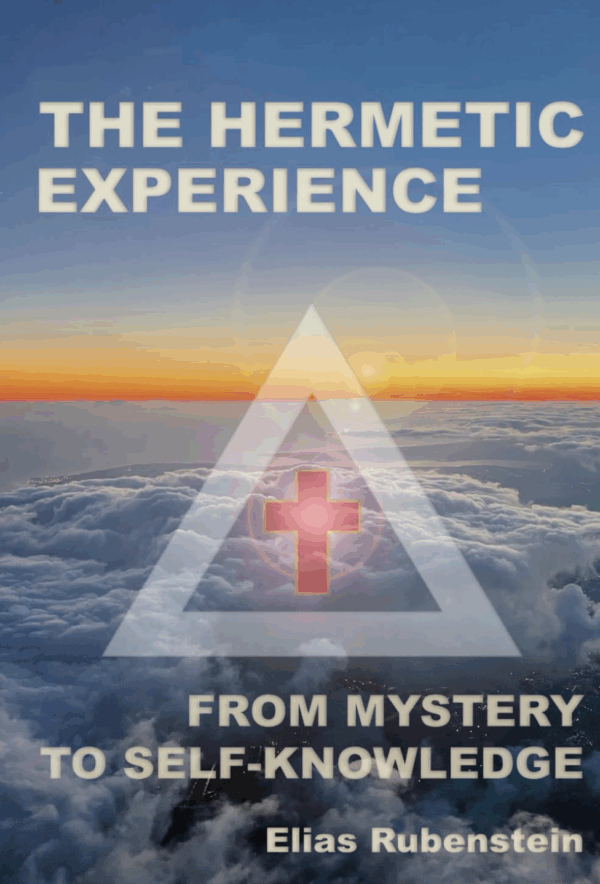The Hermetic Experience: From Mystery to Self-Discovery
By Dr. Elias Rubenstein
EXCERPT
We begin in mystical Egypt, famous for its deep spiritual knowledge and mysterious ceremonies. Like a magical aura, it has always fascinated people, and it is not only the ritual practices that make Egypt so attractive. The sacred sciences also played a central role, as they were considered the key to higher levels of consciousness. This cradle of civilization was a master at manifesting the mysterious and sublime in its rites, which went far beyond religious rituals. They were designed to bring people into harmony with cosmic energies and to guide them on the path to spiritual enlightenment.
The sacred rituals and hieroglyphs of Egyptian culture hold a deeper meaning than exoteric scientists could ever comprehend. Ritual acts to worship the gods and mystical initiation rites played a central role in ancient Egypt. These sacred practices, filled with magic and metaphysical experiences, were intended to build a transcendental bridge between this world and the divine spheres. The imposing pyramids and venerable temples that still rise to the heavens as monumental witnesses to this bygone era were far more than mere architectural marvels. The construction of a pyramid took a very long time, often between 5 and 20 years, and required an immense amount of planning, coordination, and execution. This is even more remarkable when you consider that the average life expectancy in ancient Egypt was only 30 to 40 years. The pyramids and temples served as sacred sites where the gods were worshipped and rituals performed. The Egyptian priests, who mastered the high art of magic and divine communication, performed these rituals with great devotion. They were the guardians of ancient wisdom and had the sacred duty of both performing the rites of worship to the gods and guiding the called ones on their path of initiation as they sought harmony with the higher powers.
These initiation rites, deeply rooted in Egyptian spirituality, were considered essential steps on the path to spiritual enlightenment and the unfolding of divine potential. Osiris, Isis, Horus, and Ra are just a few of the divine beings at the center of Egyptian worship. The pharaoh himself played a crucial role in these sacred practices as the divine mediator between humans and the heavenly powers. Through ritual acts, invocations, contemplation, and prayer, he sought to harmonize with the will of the gods and thus ensure the well-being and stability of the entire empire. The pyramids and temples served as energy centers where cosmic and earthly energies were harmoniously combined. Under the guidance of the high priests, the gates to other dimensions opened and the initiated entered the sacred halls of mystery.
Here they learned to interpret the divine symbols, explore their inner spaces, and unite with the subtle forces of the cosmos. The practice of invoking the gods and initiation was thus a relationship between man, the world of the gods, and the entire cosmos. The temples and pyramids were the stages on which the miracle of the connection between earthly existence and divine presence took place every day. The high priests, as mediators between the worlds, played a central role in this spiritual drama, not only creating the space for these sacred encounters, but also preserving and passing on the sacred teachings and mysteries for future generations. Through the chain of initiations, the legacy of ancient Egypt remained alive, a source of deep spiritual wisdom and magical rites that formed the heart of this unique culture.
From this cultural flowering emerged the Hermetic tradition, which is still alive and dynamic today. At the center of this movement is Hermes Trismegistus, the “Thrice Great Hermes”, the “Master of Masters”. He is not only a fusion of the Greek god Hermes and the Egyptian god Thoth, but also a symbol of the union of Egyptian and Greek cultures. Thoth, who was revered for his wisdom, magic and writing skills, left a legacy that is deeply rooted in Egyptian culture. Hermes, the wise messenger of the gods in Greek mythology, is known for his wisdom and ability to mediate between worlds. When Greek and Egyptian cultures collided in Hellenistic times, Hermes Trismegistus became the guardian of the combined knowledge, a legacy that has endured through the centuries.
Table of Contents
Hermeticism In The Renaissance
Hermeticism In The Modern Age
The Complexity of Spirituality
Self-Realization In Hinduism
Liberation From Suffering in Buddhism
Spiritual Practices in Indigenous Cultures
Of The Americas
A Look at the West
Tools of Self-Realization
Ethics of Righteousness
High Art of Meditation
The Magic of Ritual
Map of Self-Knowledge
The Cosmology of Kabbalah
Kabbalistic Mysteries: Tree of Life, Tzimtzum, & Shekhinah
Paths to Cosmic Harmony
The Spiritual Dimension of Alchemy
Symbols Of The Alchemical Process
The Philosopher’s Stone: A Metaphor for Transformation
The Alchemical Path to Enlightenment
The Hidden Power of The Tarot
The Major Arcana – A Spiritual Odyssey
The Minor Arcana – Contact With Higher Worlds
Astrology in a Hermetic Light
Harmonization of The Twelve Zodiac Signs
Hermeticism in Everyday Life
Secrets of Transmutation
Conclusion
Glossary of Hermetic Terms
